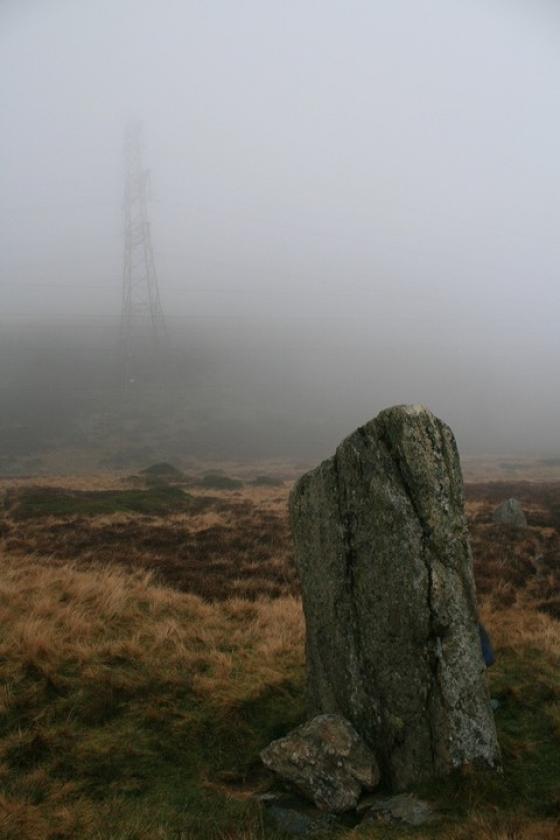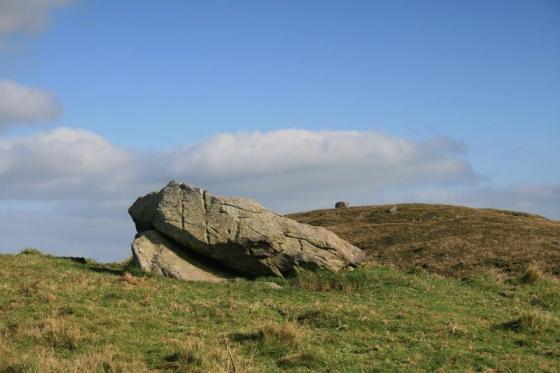Visited 26th May 2012
Glorious sunny weather today, and after the recent downpours and grim weather I felt I really needed to get out and about.
I’ve been meaning to visit the Tal-y-fan monuments for ages, but never got around to it so today seemed as good a day as any! Maen-y-Bardd is a site I’d wanted to visit for ages, having seen some lovely photographs of it in the past, which made it look as if it was in an area of splendid mountainous isolation.
After a maddeningly slow meander up the A5, with roadworks and tractors reducing progress to a crawl at times, I turned off the B5106 just south of Conwy and headed into the pretty village of Rowen. I’d decided to approach via the Youth Hostel at Rhiw, so taking a right turn in the village after the hotel, and folowing the ominously dead end signed road, the lane started to climb the hill. Soon the road became extremely steep, (quite possibly one of the steepest I’ve ever driven up!) but the car did sterling work and soon I reached the end of the road. At first I thought I’d missed the Youth Hostel, before realising it was in fact the white building to my left where the metalled road ends, so I pulled into their drive, and with a distinct lack of anyone around to ask whether I’d be OK to park there, I made sure I wasn’t blocking any entrances and left the car there hoping for the best.
A short walk along the lane and the first thing I notice is a small standing stone, (one of the Caerhun stones, although I didn’t realise it as such at the time) behind which the unmistakable silhouette of the dolman is visible.
As others have said this is the absolute epitome of a perfectly presented dolman, perched with amazing views over the Afon Tafalog and down the Conwy valley, and currently being used a shelter by a group of shaggy sheep, eager to escape the midday suns heat.
The sheep soon move as I squeeze myself inside, and just let the cares of the world fall away. The poet stone itself is said to grant the gift of inspiration or madness to those who spend the night here, a legend also told in relation to Cadair Idris, where I once spent a cold and windswept night camping near the summit one February. The jury’s still out on whether that expedition inproved my poetic skills, (and I’m sure those who know me don’t reckon that I could get much madder than I already am!) so maybe I should spend a night in Maen-y-Bardd sometime?
Certainly sitting here in the chamber with this view is inspiring, and it’s cool sheltered and peaceful in here, it’s really quite comfortable complete with a ‘pondering stone’ you can sit on to keep you off the earthen floor.
A great start to the Tal-y-Fan explore, if the other sites that line the old Roman road are even half as good I’m in for a great day!






































































































































































